
Now that School is finished,
Most of you are moving to High School,
and I’m going to miss you A LOT!!!


Now that School is finished,
Most of you are moving to High School,
and I’m going to miss you A LOT!!!

A total lunar eclipse is taking place on June 15, 2011. It is the first of two such eclipses in 2011, the second occurring on December 10, 2011. Read more
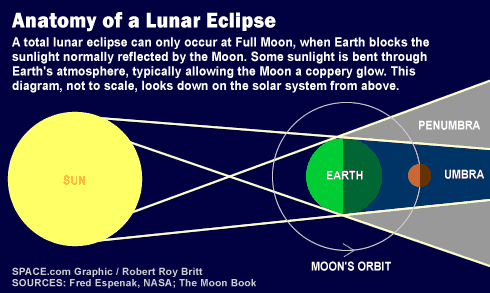
and HAVE A GREAT WEEKEND!! 
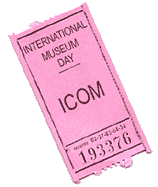
International Museum Day is celebrated on 18 May each year. The theme for 2011 is Museum and Memory.
International Museum Day was established in 1977 by the International Council of Museums (ICOM), and was first celebrated in 1978. It, and future International Museum Days, would be:
... accompanied by the opening of new museums and exhibitions, meetings with visitors, acquaintance of the public with the aims and tasks and practical activity of the International Council of Museums and its national organisations, publication of materials on this subject in the press and also by the organisation of exchange exhibitions and international forums to discuss major problems of the theory and practice of the museum profession.
12th General Assembly of ICOM, Resolution No 5, 28 May 1977
Look at the stars,
Look how they shine for you...
Have a wonderful Easter Holiday!!!
Love 
Learning to be happy, a video that cheers you up.
BE HAPPY!!
No matter what happens around you.
HAVE A NICE WEEKEND!!
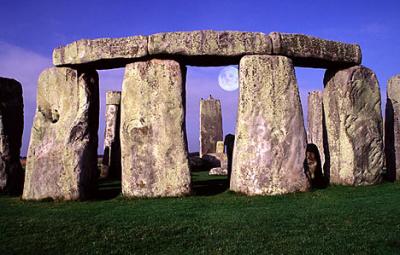
Now that we’ve learned about this huge and mysterious circle of stones in the south of England, I thought you may want to find out a bit more about it.
Click on the link to get "there".
La Hora del Planeta empezó en una sola ciudad de un país el 31 de marzo de 2007, cuando 2,2 millones de personas de Sidney, Australia, apagaron sus luces durante una hora para reclamar acciones contra el cambio climático.
Un año después, 370 ciudades de más de 35 países convirtieron esta iniciativa en un movimiento global por la sostenibilidad, consiguiendo que entre 50 y 100 millones de personas apagaran las luces en la Hora del Planeta 2008. Edificios emblemáticos como el puente Golden Gate, el Coliseo de Roma, Times Square o el Cristo Redentor de Río de Janeiro se unieron a este llamamiento de acción por el clima oscureciéndose durante una hora.
La Hora del Planeta 2009 hizo historia y se convirtió en la acción voluntaria global más grande nunca vista, participando cientos de millones de personas de todo el mundo. Se apagaron luces de 4.159 pueblos y ciudades de 88 países, incluyendo 73 capitales y 9 de las 10 ciudades más pobladas del mundo. La Esfinge y las Pirámides de Giza, la Torre Eiffel de París, Table Mountain de Ciudad del Cabo o las cataratas del Niágara se unieron a las más de 1.000 maravillas del mundo en esta llamada a la acción contra el cambio climático.
Este movimiento histórico fue más allá durante la Hora del Planeta 2010, cuando ciudadanos de 128 países de todos los continentes apagaron sus luces, celebraron fiestas y reuniones a la luz de las velas y organizaron muchas otras actividades para mostrar lo que puede hacer el mundo cuando actúa unido. La ciudad prohibida de Beijing, la Puerta de Branderburgo, las cataratas Victoria o el Museo de la Paz de Hiroshima se unieron a la lista creciente de iconos en todos los rincones del mundo para simbolizar la lucha contra el cambio climático.
En un intento de promover un cambio de actitud global, la Hora del Planeta 2011 irá más allá de la hora y del cambio climático, señalando el momento a partir del cual los individuos, empresas y gobiernos se comprometerán a realizar acciones a favor del planeta para todo el año. Hogares, oficinas, edificios oficiales e iconos arquitectónicos de Europa, Asia, África, Oceanía y América se oscurecerán para simbolizar las acciones de las personas para ir más allá de la hora.
La Hora del Planeta es un mensaje universal de esperanza y acción.
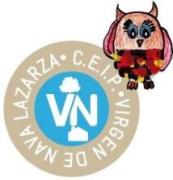
Our School already has a mascot and a name for it!!
This is our owl. There are many like it, but this one is ours.
It’s a smart and clever owl called PICO LISTO.
The Wise Owl has all the knowledge. Owls have also been associated with wisdom and prosperity as a result of frequently being companion animals for goddesses.
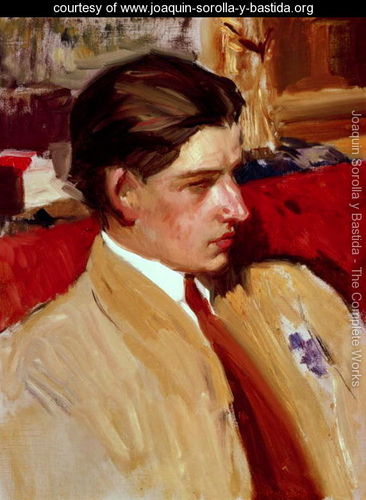 Joaquin Sorolla y Bastida (February 27, 1863 - August 10, 1923) was a Spanish painter, born in Valencia, who excelled in the painting of portraits, landscapes, and monumental works of social and historical themes. His most typical works are characterized by a dexterous representation of the people and landscape under the sunlight of his native land. Joaquin Sorolla was the eldest child born to a tradesman, also named Joaquin, and his wife, Concepcion Bastida. His sister, Concha, was born a year later. In August 1865 both children were orphaned when their parents died, possibly from cholera. They were thereafter cared for by their maternal aunt and uncle. He received his initial art education, at the age of fourteen, in his native town, and then under a succession of teachers including Cayetano Capuz, Salustiano Asenjo. At the age of eighteen he traveled to Madrid, vigorously studying master paintings in the Museo del Prado.
Joaquin Sorolla y Bastida (February 27, 1863 - August 10, 1923) was a Spanish painter, born in Valencia, who excelled in the painting of portraits, landscapes, and monumental works of social and historical themes. His most typical works are characterized by a dexterous representation of the people and landscape under the sunlight of his native land. Joaquin Sorolla was the eldest child born to a tradesman, also named Joaquin, and his wife, Concepcion Bastida. His sister, Concha, was born a year later. In August 1865 both children were orphaned when their parents died, possibly from cholera. They were thereafter cared for by their maternal aunt and uncle. He received his initial art education, at the age of fourteen, in his native town, and then under a succession of teachers including Cayetano Capuz, Salustiano Asenjo. At the age of eighteen he traveled to Madrid, vigorously studying master paintings in the Museo del Prado.After completing his military service, at twenty-two Sorolla obtained a grant which enabled a four year term to study painting in Rome, Italy, where he was welcomed by and found stability in the example of F. Pradilla, the director of the Spanish Academy in Rome. A long sojourn to Paris in 1885 provided his first exposure to modern painting; of special influence were exhibitions of Jules Bastien-Lepage and Adolf von Menzel. Back in Rome he studied with Jose Benlliure, Emilio Sala, and Jose Villegas.
Click here for the complete biography and works.



THANK YOU EVERYONE!!
You’re my inspiration!!![]()
Ayer martes se celebró en todo el mundo el DÍA INTERNACIONAL DE LA INTERNET SEGURA: SID 2011. Se trata de un evento que tiene lugar cada año en el mes de febrero, con el objetivo de promover un uso responsable y seguro de las nuevas tecnologías, especialmente entre menores y jóvenes. Es promovido directamente por la Comisión Europea y está organizado por INSAFE, la Red Europea por una Internet Segura, y en España por la organización PROTEGELES como centro de sensibilización español perteneciente al INSAFE.
El eslogan de este año es: "INTERNET ES MAS QUE UN JUEGO, ES TU VIDA", y apela al hecho de que nuestras acciones y decisiones, cuando estamos interactuando con nuestros amigos en las redes sociales o jugando en red, tienen su repercusión en la vida real. Los juegos online y las redes sociales son las actividades más populares entre los jóvenes europeos. Según los estudios de la Comisión Europea el 80% de los internautas europeos entre 16 y 24 años ha usado una red social durante 2010. Este porcentaje sube al 94% en Polonia y al 90% en Portugal y Eslovenia. En España, el 79% de los jóvenes internautas utiliza la red también para este uso. Por su parte, los jóvenes holandeses son los menos enganchados a las redes sociales, ya que sólo el 55% consulta blogs o está presente en la web social. Así mismo, otros estudios apuntan a que aproximadamente el 65% de los menores europeos son consumidores habituales de videojuegos.
Este año, el SID 2011 pretende sensibilizar a los más jóvenes sobre la necesidad de mantener en la vida virtual una actitud similar a la que mantenemos en la vida real, respetando normas de conducta, de educación y de relación que permitan hacer un uso satisfactorio de internet.
Guillermo Cánovas, Presidente de PROTEGELES, la organización que representa al INSAFE en España, señala que: "muchas situaciones que se producen durante una tarde en una red social, tienen después su repercusión en el colegio o el instituto al día siguiente. Los comentarios, las fotos que se suben, etc, son normalmente sobre personas reales que conocemos y con las que de una forma u otra nos estamos relacionando".
La organización PROTEGELES ha impartido en estos últimos años conferencias y talleres en más de 1.000 colegios e institutos de toda España. Durante estas charlas recomiendan a los menores ser cautelosos con las fotos e informaciones que cuelgan en internet. Así, por ejemplo, al hablar sobre las fotografías que van a subir siempre les hacen la siguiente reflexión: "antes de subir una foto a internet, piensa si est´s dispuesto/a a que tus padres lleguen a verla" o si estás dispuesto/a a que se la lleguen a encontrar tus propios hijos en el futuro o tu jefe del trabajo" Pues si una sola persona copia esa foto que has subido, podrá distribuirla por todo el mundo".
Cientos de organizaciones promueven en España la celebración del DÍA INTERNACIONAL DE LA INTERNET SEGURA: desde las confederaciones de asociaciones de padres de alumnos, las fuerzas y cuerpos de seguridad del estado, la industria de internet y otras instituciones: CEAPA, CONCAPA, BRIGADA DE INVESTIGACION TECNOLÓGICA DE LA POLICIA, GRUPO DE DELITOS TELEMÁTICOS DE LA GUARDIA CIVIL, INTECO, VOLUNTARIOS POR MADRID, MICROSOFT, YAHOO, TELEFóNICA, ORANGE, VODAFONE, YOIGO, HABBO, TUENTI, BRITISH TELECOM, etc...
Durante el SID 2011 se difunde en todo el mundo el mismo spot de televisión, el mismo logo y el mismo eslogan, con el objetivo de unificar el mensaje.
Web oficial del SID 2011 en España: www.internetsegura2011.es .

ARE YOU READY AND ORGANIZED TO GO BACK TO SCHOOL???
No matter what you’re trying to do, there are three important steps you need to take:
To get your homework done, you need to follow three steps: Organize, focus, and get it done. Take this quiz to see how well you do in each category and get some useful tips for improving these important skills. They come in handy no matter what you’re trying to do - from writing a report to redecorating your bedroom.
Easy????

![]()
 | 40.000 visitors and growing!!! |  |
Hi kids!!
How is Christmas going??
During these holidays you should have lots of fun, relax and spend as much time as possible with your family,
...and you should also do pages 50 to 57 of your Mega English, and read the book I lent you.
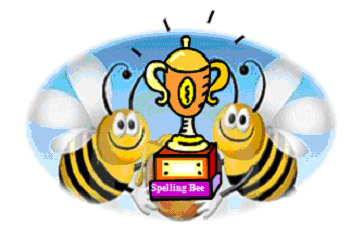
On Wednesday and Thursday we had our first Spelling Bee this school year.
This term participants were: Pablo Luis, Sergio B., Paula, Lydia, Cristina and Sofía, from 6ºA; Victor, César, Daniel, Javier and Lucía, from 6ºB; Jorge, Eva P., Álvaro, Rodrigo and Isaac, from 6ªC; and Juan José, Lucía, Luisa, Cristiana and Alejandra, from 6ºD.
We all spent a good time during the contest and discovered how difficult it is to spell words such as arrangement and empire.
At the end our winner was Eva Pedrera Elvira (who was also the winner in the first Spelling Bee last December), followed by Pablo Luis de Pablo Carrión and César Lucio Cifuentes.
CONGRATULATIONS to the three winners and all the participants!!!
YOU’RE GREAT!!!

We’ve though this video was very appropriate as a farewell song.
We already miss you a lot!!
Take good care of yourself!!


Pippi Långstrump is a fictional character in a series of children’s books by Swedish author Astrid Lindgren, and adapted into multiple films and television series. Pippi was named by Lindgren’s then nine-year-old daughter, Karin, who requested a get-well story from her mother one day when she was home sick from school.
Nine-year-old Pippi is unconventional, assertive, and has superhuman strength, being able to lift her horse one-handed without difficulty. She frequently mocks and dupes adults she encounters, an attitude likely to appeal to young readers; however, Pippi usually reserves her worst behavior for the most pompous and condescending of adults. She turns white around the nose whenever she gets angry, and considering her superhuman strength, this fortunately happens very rarely. Pippi’s anger is reserved for the most extreme cases, such as when a man ill-treats his horse. And like Peter Pan, Pippi does not want to grow up.
After an initial rejection from Bonnier Publishers in 1944, Lindgren’s manuscript was accepted for publication by the Swedish publisher Rabén and Sjögren. The first three Pippi chapter books were published from 1945 to 1948, with an additional series of six books published in 1969–1975. Two final stories were printed in 1979 and 2000. The books have been translated into 64 languages.
In 1968, the Swedish-German T.V. series that narrated the adventures of the redhead girl, started to be recorded. A movie had already been done 20 years earlier, in 1949 but Astrid Lindgren, the creator of the character, did not like it and she committed herself with the new project, and together with the director Olle Hellbom they would select Inger Nilsson for the role of her life.